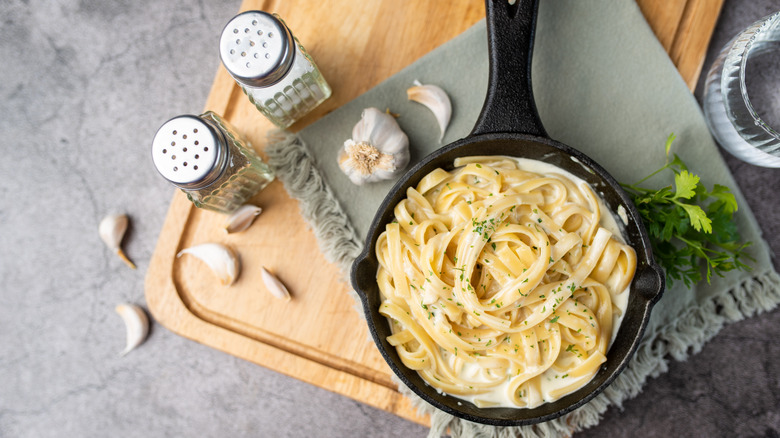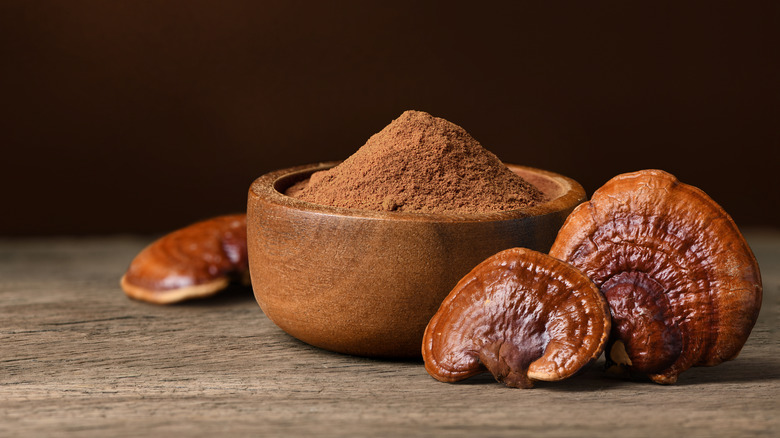The Umami-Packed Powder You Should Add To Creamy Dishes
Most casseroles, curries, risottos, and chicken pot pies (per Kitchn) have one thing in common, and it has nothing to do with the actual ingredients in each dish. They're all typically rich and creamy, coating your palate with a thickened broth or sauce that enhances the entire eating experience.
To make a dish creamy, the use of heavy cream or butter may come to mind, but as Epicurious explains, a home cook can also incorporate avocados, buttermilk, aioli, and cheese like ricotta or cottage. Ingredients like these certainly add flavor to the food in question, but the creaminess isn't as much about flavor as it is about texture and the craveable aspects it provides. Mac and cheese is a great example of this. Its flavor notes can simply be described as cheesy, but we probably love it so much because it's thick, rich, and comforting, which are all elements of creaminess.
It's not too difficult to make a dish creamier, especially with some of the additions mentioned above. But a separate skill set involves enhancing velvety dishes with specific seasonings and spices. It certainly depends on the dish, but we've got an umami-packed powder one that works well with lots of creamy recipes.
Yes to mushroom powder
According to Dr. Axe, mushroom powder consists of pulverized dried mushrooms. Varieties include porcini, shiitake, reishi, and chaga, among several others. Some are also used for holistic medicine purposes, boasting benefits like inflammation reduction and disease prevention. In terms of its flavor, mushroom powder is often described as having a complex, earthy taste, per Om Mushroom Superfood. Foods like fish, roasted meats, and vegetables all benefit from the enhanced complexity and dimension that mushroom powder provides, which also bears some flavor enhancement similarities to MSG.
Food & Wine explains that not much of this powder is needed to elevate cream-based dishes like soups and sauces. However, it's also especially useful for those times when your fridge is lacking fresh mushrooms, as it can replace these for those beloved umami flavors that our palate craves.
To use mushroom powder in soups, stews, or sauces, Indigo Herbs suggests sprinkling some on a sautéed mirepoix or veggie base that will be used for the dish. A range of 1 teaspoon to a few tablespoons will work, but if you're skeptical about it, it's probably best to start with 1 teaspoon or less and then work your way up. If you want to add the powder at a later stage of the cooking process, the latter source notes that it's fine, though the initial stages are best for the most pronounced flavors.

